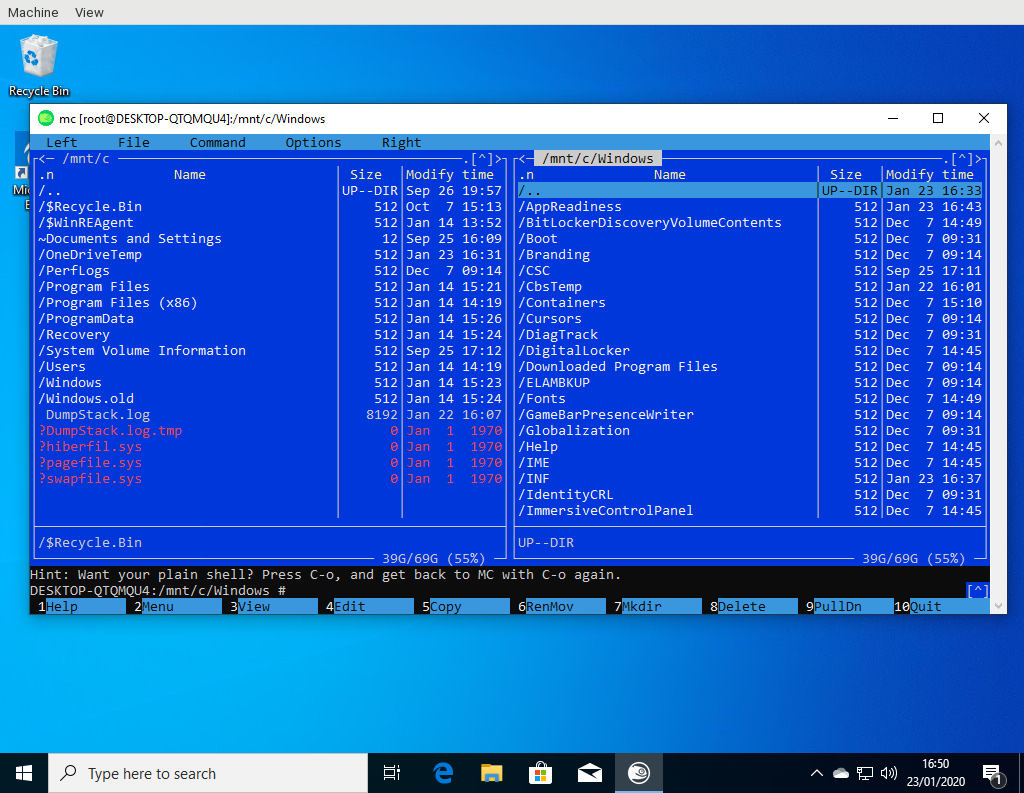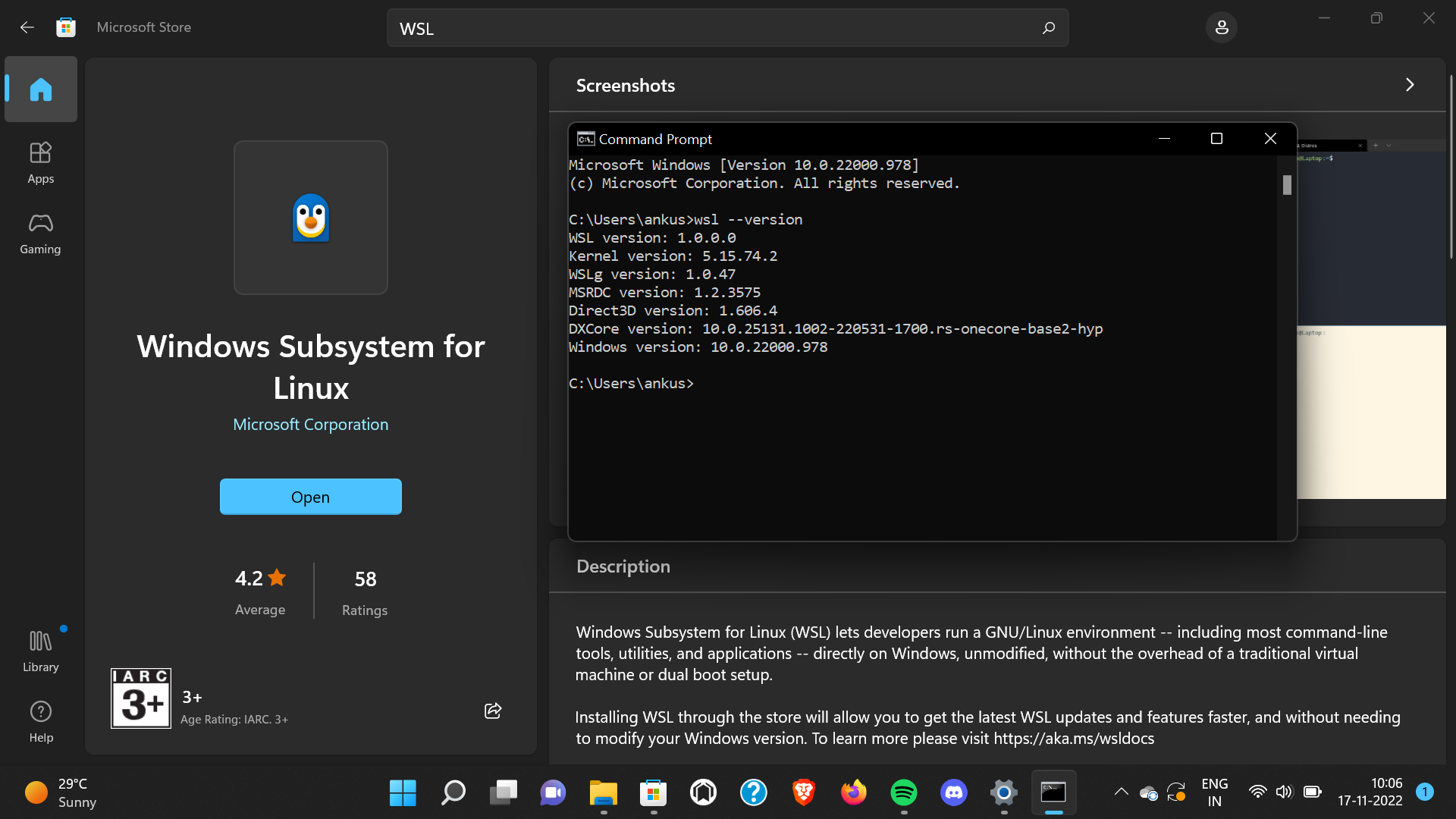Hey there, tech enthusiasts! Let's dive straight into something that’s been creating waves in the coding world lately: WSL. If you're into development, you've probably heard about it by now. But what exactly is WSL? Why is everyone talking about it? Well, buckle up because we're about to break it down for you in a way that's easy to digest and packed with actionable insights. This isn't just another tech article; it's your gateway to mastering one of the most powerful tools in modern computing.
WSL, or Windows Subsystem for Linux, has revolutionized the way developers work across platforms. No longer do you have to juggle between operating systems or deal with the frustration of compatibility issues. WSL bridges the gap between Windows and Linux, giving you the best of both worlds. Whether you're a seasoned developer or just starting out, understanding WSL can be a game-changer for your workflow.
Before we dive deeper, let’s set the stage. WSL isn’t just some random tool; it’s a solution to a problem that developers have been facing for years. Imagine being able to run Linux commands on your Windows machine without needing a dual-boot setup or a virtual machine. Sounds too good to be true? Keep reading, because WSL makes it all possible. Let’s explore what makes it so special.
Read also:Unveiling The Allure Of Sexy Movie Hd Video A Deep Dive Into The World Of Cinematic Seduction
What Exactly is WSL?
Alright, let’s get technical but not too technical, ya know? WSL stands for Windows Subsystem for Linux, and it’s basically a compatibility layer that allows Linux applications to run on Windows. It’s like having a secret portal to the Linux universe right inside your Windows system. No more switching between machines or dealing with clunky workarounds. WSL lets you access Linux binaries natively, which means you can run Linux commands, scripts, and even entire development environments without leaving your Windows setup.
Now, here’s the kicker: WSL doesn’t just emulate Linux; it integrates seamlessly with Windows. You can access Windows files from Linux, use Windows tools alongside Linux utilities, and even run GUI applications (with a bit of tweaking). It’s like the ultimate power couple of operating systems, and it’s changing the game for developers everywhere.
Why Should You Care About WSL?
Let’s be real for a second. If you’re a developer, you’ve probably faced the struggle of working on Windows while needing Linux-based tools. Whether it’s dealing with path issues, file permissions, or just trying to get a specific library to work, it can be a headache. WSL eliminates all of that. It’s like having a personal assistant that handles all the heavy lifting for you.
Here’s why WSL matters:
- It saves you time by eliminating the need for dual-booting or virtual machines.
- It gives you access to the vast ecosystem of Linux tools and utilities.
- It simplifies development workflows by allowing you to work in a single environment.
- It’s free and comes pre-installed on modern Windows versions.
Plus, with the release of WSL 2, things have gotten even better. WSL 2 introduces a full Linux kernel, making it faster and more compatible than ever. If you’re still using WSL 1, it’s time to upgrade. Trust me, your future self will thank you.
Key Features of WSL
So, what makes WSL so special? Let’s break it down into bite-sized chunks:
Read also:Pauline Road Fire The Story Behind The Flames And Its Impact
1. Seamless Integration
WSL allows you to run Linux commands and applications directly from your Windows terminal. You can access Windows files from Linux and vice versa, creating a seamless experience that feels like magic.
2. Performance Boost with WSL 2
With WSL 2, you get a full Linux kernel running on your Windows machine. This means better performance, especially when working with file systems and resource-intensive tasks. It’s like upgrading from a bike to a jetpack.
3. Access to Linux Packages
WSL gives you access to the entire Linux package ecosystem. Need to install Python, Node.js, or any other Linux-based tool? Just fire up your terminal and you’re good to go.
4. Customization Options
WSL isn’t one-size-fits-all. You can choose from a variety of Linux distributions, including Ubuntu, Debian, and Fedora, to name a few. This means you can tailor your setup to fit your specific needs.
How to Install WSL
Alright, let’s get practical. Installing WSL is surprisingly easy, even for beginners. Here’s a step-by-step guide:
- Open PowerShell as an administrator and run the command:
wsl --install. - Once the installation is complete, reboot your system.
- Choose your preferred Linux distribution from the Microsoft Store.
- Set up your Linux username and password during the initial setup.
And that’s it! You’re now ready to rock and roll with WSL. If you want to upgrade to WSL 2, just run the command: wsl --set-default-version 2. Easy peasy, right?
Top Use Cases for WSL
Now that you know what WSL is and how to install it, let’s talk about how you can use it in real-world scenarios:
1. Web Development
If you’re into web development, WSL is your new best friend. Whether you’re building websites with React, Vue, or Django, WSL gives you access to all the Linux-based tools you need without leaving your Windows environment.
2. DevOps and Automation
WSL is perfect for DevOps professionals who need to automate tasks across platforms. With tools like Bash, Git, and Docker at your fingertips, you can streamline your workflows like never before.
3. Machine Learning and AI
Machine learning frameworks like TensorFlow and PyTorch work seamlessly with WSL, making it an ideal choice for data scientists and AI enthusiasts.
4. System Administration
For sysadmins who need to manage Linux servers from a Windows machine, WSL eliminates the need for SSH clients or remote desktop tools. You can run all your Linux commands right from your terminal.
Common Challenges with WSL
While WSL is a game-changer, it’s not without its challenges. Here are a few things to watch out for:
- GUI applications may require additional setup to work properly.
- Some hardware acceleration features may not be fully supported.
- Resource management can be tricky if you’re running heavy workloads.
But don’t worry; most of these challenges can be overcome with a bit of tweaking and experimentation. The WSL community is vibrant and supportive, so you’ll always find help when you need it.
WSL vs Virtual Machines
One question that often comes up is: Should I use WSL or a virtual machine? Let’s break it down:
WSL
WSL is lightweight, fast, and integrates seamlessly with Windows. It’s perfect for developers who need access to Linux tools without the overhead of a full virtual machine.
Virtual Machines
Virtual machines, on the other hand, offer more isolation and control. If you need to run a full Linux environment with all its bells and whistles, a virtual machine might be the better choice.
Ultimately, the decision comes down to your specific needs and use cases. For most developers, WSL strikes the perfect balance between performance and functionality.
Future of WSL
Microsoft has big plans for WSL, and the future looks bright. With ongoing improvements and new features being added regularly, WSL is becoming an indispensable tool for developers worldwide. Some exciting developments to look forward to include:
- Enhanced GUI support for WSL 2.
- Improved performance and compatibility.
- Integration with Windows services like Docker Desktop.
As the line between Windows and Linux continues to blur, WSL will play an increasingly important role in shaping the future of development.
Conclusion: Embrace the Power of WSL
And there you have it, folks! WSL isn’t just a tool; it’s a game-changer for developers who want to work smarter, not harder. Whether you’re building websites, automating tasks, or diving into machine learning, WSL gives you the flexibility and power to tackle any challenge that comes your way.
So, what are you waiting for? Dive into WSL and unlock your full potential as a developer. And don’t forget to share your experiences and tips in the comments below. Together, we can build a community of WSL enthusiasts who help each other grow and succeed. Happy coding!
Table of Contents
Unlock the Power of WSL: A Game-Changer for Developers


